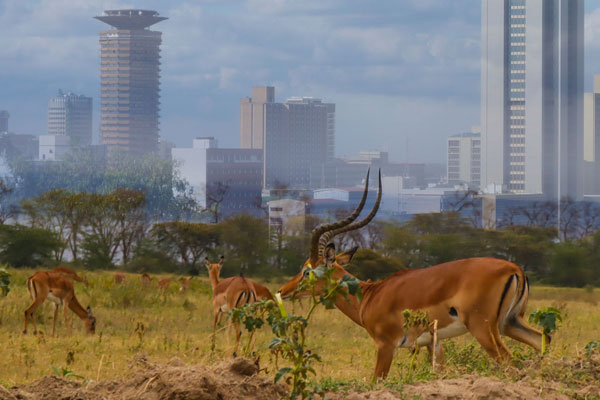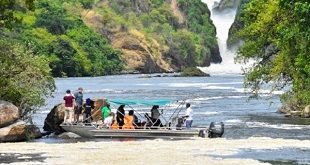
In these two African cities, you can make a turn from the worst traffic jam and find yourself in the relaxing escape of nature within a minute.
Nairobi, Kenya | BIRD AGENCY | Kenya, the most famous country in Eastern Africa, was named the world’s leading Safari destination for 2021 by the World Travel Awards for the seventh year in a row. With over 50 national parks and game reserves, the country’s vast wildlife preserves have remained a competitive destination among domestic and international tourists.
Unbeknownst to many, two of Kenya’s cities, Nakuru and Nairobi, offer a unique package in the nation’s Safari tourism package. Both cities have national parks sitting right on their doorsteps.
Nairobi National Park is the only national park in the world located within a capital city. Established in 1946, the park is just seven kilometres from the central business district. Only a fence separates the wildlife from the metropolis, with the city’s skyscrapers and billboards providing a backdrop to the park.
Despite its proximity to civilisation, the vast open grass plains host a wide variety of wildlife, including the endangered black rhino, lions, leopards, cheetahs, hyenas, buffaloes, giraffes and a diverse birdlife with over 400 species recorded.
The park has designated picnic spots, walking trails, and campsites. Also located in the park is the Sheldrick Wildlife Trust, a sanctuary for orphaned baby rhinos and elephants.
A quick getaway from the capital city, this urban national park is one of the most accessible Safari destinations.
Approximately 160 kilometres from Nairobi is the city of Nakuru which hosts Lake Nakuru National park, a UNESCO world heritage site.
The park, also known as Lake Pink, is four kilometres away from the city centre and best known for its thousands, sometimes millions, of flamingos forming a big pink band on the shores.
Besides the pink plumage of flamingoes, visitors can enjoy seeing the park’s zebra, hippo, olive baboon, vervet and colobus monkeys, waterbuck and hyena. Other big Safari wildlife to look for include lions, cheetahs, leopards and buffaloes.
Lake Nakuru is also known for hosting some endangered but beautiful species. You’re sure to see rare Rothschild’s Giraffe along with white rhinos. The park is also a sanctuary for one of Kenya’s largest populations of black rhinos.
According to Lake Nakuru’s Deputy Park warden Carolyne Mwebia, the low park entrance fees, plenty of guide options, different sceneries, and location has also made Lake Nakuru one of the most accessible safari destinations in Africa.
“Kenya is such a beautiful country. I cannot imagine living in a city that can offer me wildlife watching any day anytime as a way of unwinding. I tell Kenyans to embrace domestic tourism and hope that animal scares are not a frequent thing for residents,” said Abigail Schneider, a repeat tourist from Germany, who has visited seven of the country’s 23 parks.
According to the Kenya Wildlife Service director of Strategy and Change, Edwin Wanyonyi, the country has a rich Safari tour package that includes four National parks, 28 national reserves, six national marine reserves and four national sanctuaries. There are also several private and community wildlife sanctuaries.
“We are determined to maintain the true meaning of Safari in the wild in the game parks, especially within the cities, despite the pressure of urbanisation and climate change,” he said. “Nowhere else in the world do you get an experience of breathtaking sceneries and within a short time can access cities, and as KWS, we strive to keep this experience natural.”
Though there are other cities in Africa, such as Zambia’s capital, Lusaka, which has Lusaka National Park within its vicinity, Kenya’s two cities host the parks within their boundaries, making the only ones offering “modernity and wildlife” in one package.
However, the urbanisation challenge has been the biggest, especially in Nairobi, where encroachment into animal migratory corridors by individuals and infrastructure endangers the animals.
It is now not uncommon to see the animals strolling on the highways providing a momentary cocktail of emotions– excitement and fright– to the city residents.
According to World Atlas, Kenya has the highest number of national parks in Africa, followed by Zambia and South Africa.
To grow its tourism offering and uptake, the country is leveraging its cities, especially Nairobi and Nakuru, which have huge populations, to boost local tourist numbers.
****
SOURCE: by Lucy Githugo, bird story agency
 The Independent Uganda: You get the Truth we Pay the Price
The Independent Uganda: You get the Truth we Pay the Price


